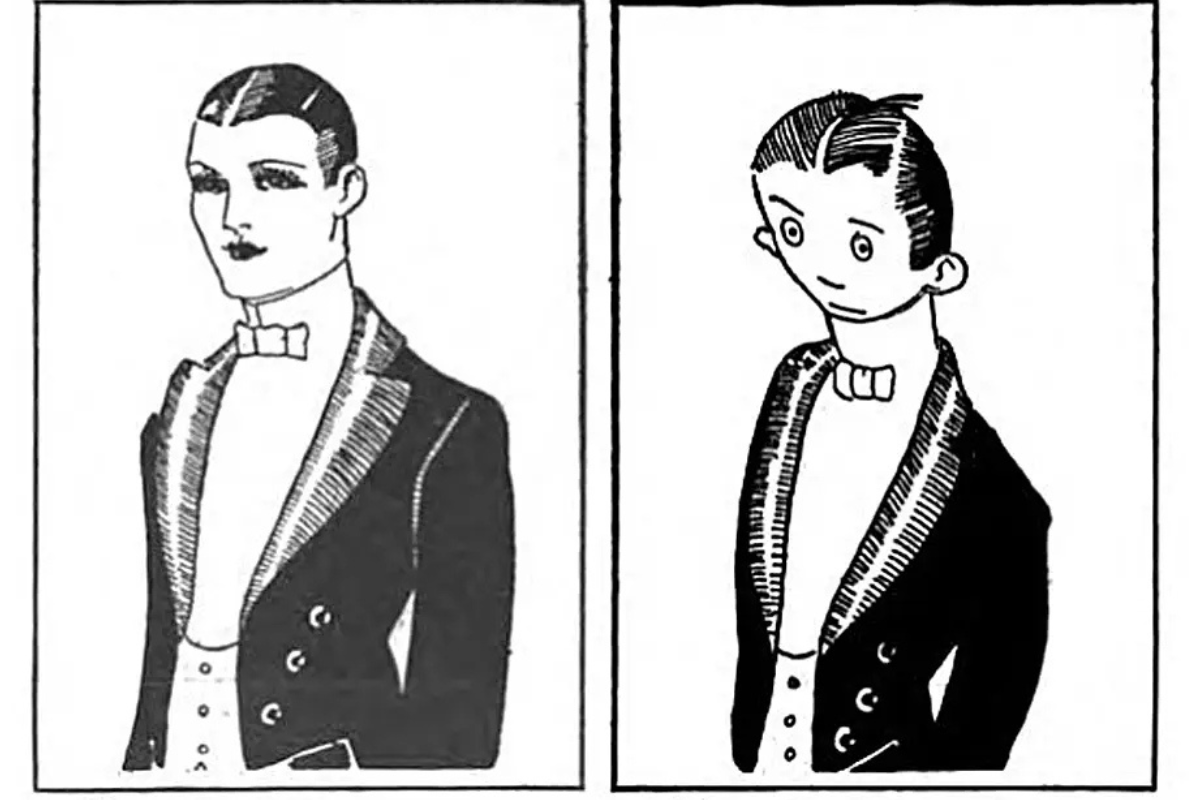Millennials didn't invent the meme. The Silent Generation did...in 1921.
Honestly, the 'first meme ever' is still pretty funny.

People think they've found the "first meme ever" in a cartoon from 1921.
There was once a guy affectionately known on the Internet as "Bad Lucky Brian." He was a scrawny, geeky kid caught posing awkwardly for his school photo. And shortly after his unfortunate picture first appeared on Reddit in 2012, he became the face of one of social media's earliest memes.
All millennials and Gen Xers remembers this golden era of simple memes, when every joke on Facebook and a very young Instagram looked like this:

Bad Luck Brian was joined around the same time by Scumbag Steve, Overly Attached Girlfriend, the "Ermagherd!" girl, and the fist-pumping baby. These characters gave a face and a repeatable format for people to create an endless variety of new jokes. The humor was straightforward and predictable, simple, but still funny enough to bring a smile to your face.
At the time, it was relatable and didn't usually require any special knowledge of current events or other memes.
To me, as a 38-year-old millennial, this is about where memes began—with Bad Luck Brian and the rest of the gang. But the truth is that they started earlier—far, far earlier than I ever could have imagined.
In 2018, savvy social media sleuths uncovered an old comic from a July 1921 issue of the satirical magazine Judge. The comic is further attributed to a cartoonist named Hubert F. Townsend for The Wisconsin Octopus earlier that same year.
It reads: "How you think you look when a flashlight is taken." (A 'flashlight' being an archaic way of referring to a flash photograph.) The caption goes along with a drawing of a very dapper man, hair neatly combed, chiseled features, and a meticulous tuxedo.
To the right, it reads: "How you really look," which goes along with a sillier, dumbed-down version of the same character.
If you can look past the drawing style and some of the outdated vernacular, this little cartoon will seem extremely familiar to you.

This cartoon from 1921 is a textbook example of the popular "expectation vs reality" joke format. Apparently, millennials did not invent it! The evidence actually points to the Silent Generation coming up with the template.
It seems that worrying how you look in pictures is not only a modern problem. People have been frustrated with it for over a century now, which is what makes this cartoon so resonant.
One commenter on Instagram wrote, "It's an older meme, sir, but it checks out."
"So this would be the predecessor to the 'accidentally switch the phone camera to selfie' meme," said another.
And, in fact, this piece from Townsend isn't the only example of a meme from the era.
BBC uncovered another comic from The Wisconsin Octopus which also makes use of the same joke template—though you have to look past a little outdated, sexist humor.

It's a lot of fun to imagine our grandparents or even great-grandparents cracking up while reading comic strips like these, laughing at more or less the same stuff we're still making jokes about to this day.
In a sense, memes go back even further than that.
But we have to think beyond just "Internet memes" to really see the history.
Author Richard Dawkins coined the term "meme" in 1972, calling it a "unit of cultural transmission." The New York Times defined it as, "a piece of media that is repurposed to deliver a cultural, social or political expression, mainly through humor."
Imitation is the key element of a meme. Memes reproduce and spread when people take hold of them, adapt or tweak them, and share them. That's what makes them so powerful and sticky.
PBS argues that a mosaic from the year 3 B.C. could be considered one of the earliest memes. Of course, it became a lot easier for memes to be copied and transformed and imitated once the printing press came around. In fact, every generation since the days of Hubert F. Townsend has had their own memes, or repeatable media formats that allow for easy imitation.
Baby boomers lived in the heyday of jokey bumper stickers and physical chain letters. They also had the little character featured in "Kilroy Was Here" who would show up in graffiti all over major cities during World War II.

Gen X had email forwards and the Dancing Baby meme of the early Internet. If you weren't old enough to live through email forwards, a humorous version of the antiquated chain letter, well...you seriously missed out on some of the best comedy writing of the last few decades. Or maybe I just remember it that way.
(On second thought, they were pretty corny.)

Millennials had tons of memes to choose from, from the Chuck Norris jokes to Bad Luck Brian. Gen Z and Gen Alpha have their own specific brand of memes, usually one that requires a deep knowledge of brainrot slang and up-to-the-minute Internet lore to understand.
There's a lot of focus on the differences between the generations these days. How boomers and millennials clash, and how Gen X can't understand the Gen Alpha kids, and how Gen Z doesn't approve of their parents' fashion choices. It goes on and on and on. But the long history of memes show that we have more in common than we might think. Though the specifics have changed, we all find humor in life's little frustrations (like not looking good in a picture), and we all respond to the way memes make us feel like we're not alone in how we feel about the world.
I guess what I'm saying is, don't leave out your grandpa next time you're sending a funny meme around to all your friends. He might relate to it more than you'd think.
- Inflation has been hard, but the meme about the $16 McDonald’s meal was misleading ›
- Gen Z has transformed the tragedy of September 11th into their biggest meme ›
- PETA has officially jumped the shark with this meme. (Wait, can I say that?) ›
- Weird Tinder conversation put to music becomes a viral anthem - Upworthy ›




 Beaver on riverbank.
Beaver on riverbank.  Pbs Nature Swimming GIF by Nature on PBS
Pbs Nature Swimming GIF by Nature on PBS  An actual beaver dam on the now-thriving Price River
An actual beaver dam on the now-thriving Price River 

 a piece of paper with a heart drawn on it Photo by
a piece of paper with a heart drawn on it Photo by 
 A woman looking annoyed.via
A woman looking annoyed.via  An annoyed woman hugging another woman.via
An annoyed woman hugging another woman.via 
 An old America Online disc. via\u00a0Karl Baron/Flickr
An old America Online disc. via\u00a0Karl Baron/Flickr  Brittany Murphy in the 90s.
Brittany Murphy in the 90s.